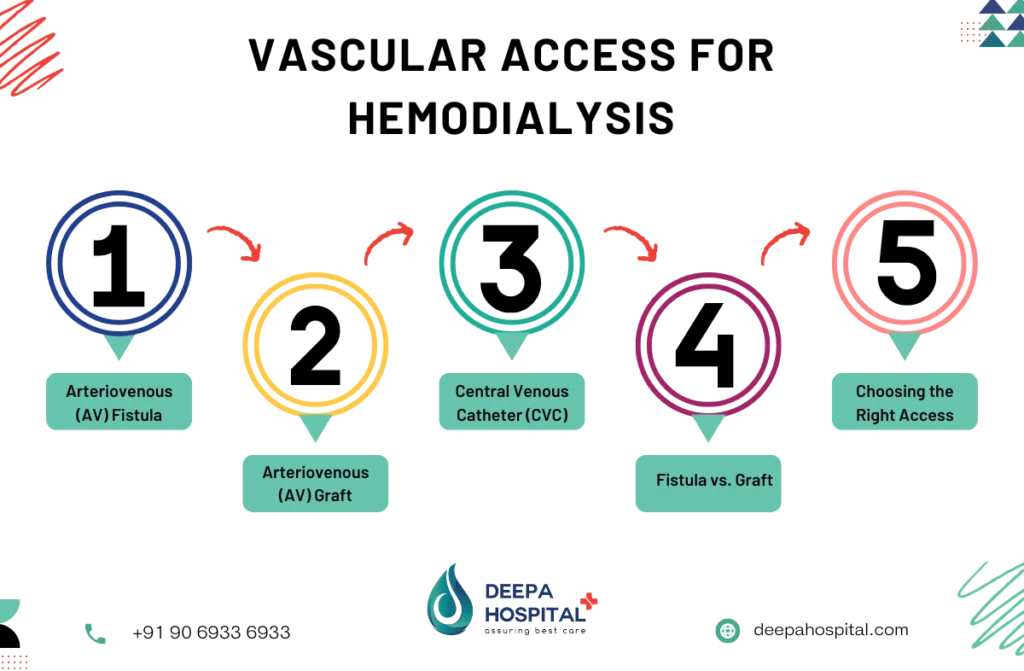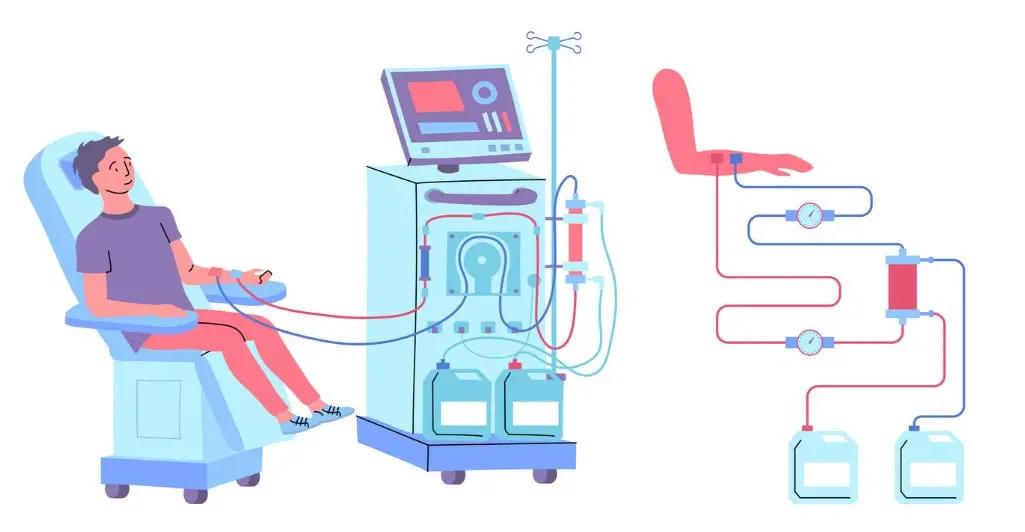When kidneys fail to do their job, hemodialysis treatment becomes a vital part of staying healthy. This process helps filter waste, toxins, and extra fluids from the blood, allowing people with kidney failure to lead better lives. In this blog, we’ll explore everything you need to know about hemodialysis treatment, its workings, costs, and options, while using simple, everyday language.

What is Hemodialysis?
Hemodialysis is a medical process used to treat kidney failure by filtering the blood. Normally, kidneys remove waste and toxins, but when they don’t function well, hemodialysis steps in to do this critical task. Here’s a closer look:
- A machine acts like an artificial kidney to clean the blood.
- The process is done through a connection to your blood vessels using a needle.
- Treatments usually happen three times a week, and each session lasts around 4 hours.
It’s one of the different types of kidney dialysis, and while it requires commitment, it can significantly improve health and quality of life.
Why Hemodialysis is Necessary
For people with kidney failure, waste and toxins can build up quickly in the body, causing severe health issues. Here’s why hemodialysis is essential:
- Removes Toxins: Helps get rid of waste and toxins that the kidneys can’t filter.
- Balances Fluids: Prevents swelling and complications by maintaining fluid levels.
- Supports Overall Health: Reduces the risk of heart issues and other complications from kidney failure.
Whether you choose in-center or types of dialysis at home, hemodialysis ensures your body stays balanced and functional.
How Hemodialysis Works
The process of hemodialysis involves using a specialized machine to clean your blood. Here’s how it works:
- Access Point: A vascular access is created, either through a fistula or catheter, to allow blood flow.
- Blood Filtration: Blood is drawn from your body, passed through the dialysis machine, and filtered.
- Return to Body: Cleaned blood is sent back into your bloodstream.
The machine mimics the work of healthy kidneys, removing waste and keeping your body in balance. It’s a key component of hemodialysis treatment and offers a lifeline to those in need.
Understanding Hemodialysis Treatment
Hemodialysis treatment is more than just a medical procedure—it’s a way to manage kidney failure effectively. Let’s break it down:
- Frequency: Most people undergo treatment three times a week.
- Duration: Each session typically lasts 3–4 hours.
- Dietary Changes: Patients must follow a strict diet to support the treatment.
- Emotional Support: Adjusting to the process can take time, so emotional and community support are critical.
Many patients also explore types of dialysis at home, such as home hemodialysis, which provides more flexibility and convenience compared to in-center treatment.
In-Center vs. Home Hemodialysis: Choosing the Right Option
When deciding on the best hemodialysis approach, patients often choose between in-center care and at-home options. Here are the key differences:
In-Center Hemodialysis
- Performed at a dialysis clinic.
- Supervised by trained medical staff.
- Fixed schedule, usually three times a week.
Home Hemodialysis
- Can be done in the comfort of your home.
- Requires training for patients and caregivers.
- Offers more flexibility and frequent treatment options.
Both options are part of the different types of kidney dialysis, and the choice depends on personal preferences, lifestyle, and medical advice.

Benefits of Hemodialysis Treatment
Hemodialysis is a life-saving treatment for individuals with kidney failure, offering several benefits that improve overall health and quality of life.
- Removes Toxins: Hemodialysis effectively removes waste products, toxins, and excess fluids from the bloodstream, mimicking the kidneys’ natural function.
- Improves Energy Levels: By cleansing the blood, it reduces fatigue, helping patients feel more energetic and capable of daily activities.
- Supports Heart Health: Regular treatment helps maintain balanced potassium and sodium levels, reducing strain on the heart.
- Enhances Appetite: By removing uremic toxins, it helps improve appetite, leading to better nutrition and overall strength.
- Prolongs Life: Hemodialysis extends life expectancy by effectively managing kidney failure symptoms, allowing patients to enjoy a healthier lifestyle.
With proper adherence to treatment and a balanced diet, hemodialysis provides hope and improved well-being for patients with chronic kidney disease.
Cost of Hemodialysis Treatment
The cost of hemodialysis treatment can vary depending on where and how it’s done. Here’s an overview:
- In-Center Treatment: Usually more expensive due to facility charges and staff supervision.
- Home Hemodialysis: Initial training and equipment costs can be high but may save money in the long run.
- Insurance Coverage: Many health insurance plans cover part or all of the treatment costs.
For patients in India, the cost of hemodialysis treatment is generally more affordable compared to many other countries, making it accessible to a broader population.
Conclusion
Hemodialysis treatment is a critical lifeline for individuals dealing with kidney failure. It provides a way to manage the condition, maintain health, and improve quality of life. Whether you choose in-center care or explore types of dialysis at home, it’s essential to work closely with your healthcare team to find the right fit. If you or a loved one is considering this treatment, don’t wait—reach out to a specialist today to take control of your kidney health.

